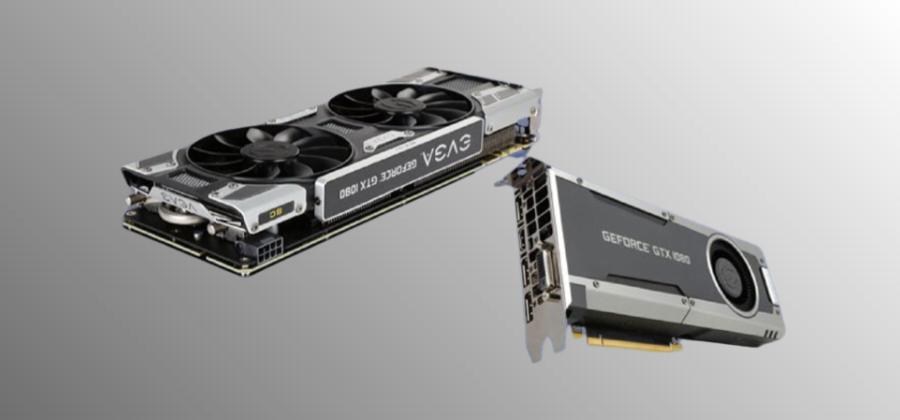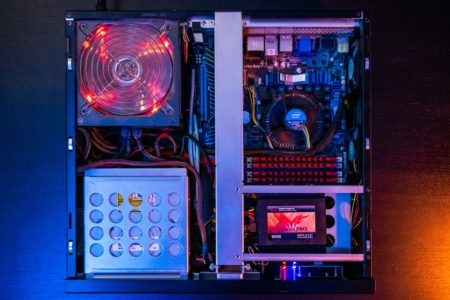A CPU, or Central Processing Unit, is the main processing component of a computer. It is often called the computer’s brain, which performs all the calculations, logic operations, and instructions necessary to run software and applications.
The CPU comprises several components: the arithmetic logic unit (ALU) and the control unit (CU). The ALU performs all arithmetic and logic operations, such as addition, subtraction, multiplication, and division. The CU, on the other hand, is responsible for fetching instructions from memory and executing them.
The speed of a CPU is measured in clock cycles per second, or hertz (Hz). The faster the clock speed, the more calculations and instructions the CPU can perform per second. Most modern CPUs have clock speeds ranging from 1 GHz to 5 GHz, with higher clock speeds typically providing better performance.
In addition to clock speed, CPUs have multiple cores, allowing them to perform multiple tasks simultaneously. A dual-core CPU has two processing cores, while a quad-core CPU has four. CPUs with more cores can handle more tasks simultaneously, providing better performance for multi-threaded applications and tasks.
CPU performance can be improved through overclocking, which involves increasing the CPU’s clock speed beyond its factory settings. However, overclocking can also lead to increased heat generation and power consumption, damaging the CPU and other components if not properly managed.
In gaming, the CPU clock speed determines how fast the CPU can process game logic and other operations, such as physics simulations and AI calculations. A higher CPU clock speed can result in faster load times, smoother gameplay, and better overall performance.
In addition to clock speed, the number of CPU cores also affects gaming and system performance. Games that are optimized for multi-threading can take advantage of multiple CPU cores, which can improve performance. CPUs with more cores can handle more tasks simultaneously, allowing for smoother multitasking and better performance in tasks that require multiple threads.
However, it is important to note that CPU clock speed and core count are not the only factors that affect gaming and system performance. Other factors, such as RAM, GPU, and storage, also significantly determine how well a computer can run games and other applications.

Increasing CPU clock speed (Overclocking)
Increasing CPU clock is also callad as overclocking. CPU overclocking increases the clock speed of a computer’s central processing unit (CPU) beyond the manufacturer’s recommended maximum operating frequency. The clock speed refers to the frequency at which the CPU executes instructions and performs calculations. By increasing the clock speed, the CPU can process data faster, which can lead to improved performance in tasks that are CPU intensive such as gaming, video editing, and scientific simulations.
Advantages and disadvantages of Overclocking
CPU overclocking is a technique used to increase the clock speed of a processor beyond its factory settings. Overclocking can offer some advantages, but it also has potential drawbacks. This article will examine the advantages and disadvantages of CPU overclocking.
Advantages:
Improved Performance: Overclocking can improve CPU performance, translating into faster computing, faster application load times, and smoother gameplay.
Cost-Effective: Overclocking can be a cost-effective way to improve your system’s performance without buying new components.
Customizable: Overclocking allows you to customize the performance of your system according to your needs.
Satisfaction: Overclocking can be a fun hobby for those who enjoy tweaking and improving their system’s performance.
Disadvantages:
Heat Generation: Overclocking can increase heat generation, which can cause damage to the CPU and other components of the system. It can also lead to system instability and crashes.
Power Consumption: Overclocking can increase the power consumption of the CPU, which can result in higher electricity bills and put additional strain on the power supply.
Reduced Lifespan: Overclocking can reduce the lifespan of the CPU due to increased heat generation and power consumption.
Warranty Void: Overclocking can void the warranty of the CPU and other components of the system.
Compatibility: Overclocking may not be compatible with all types of CPUs and motherboards, and achieving stable overclocking on some systems may not be possible.
How to increase CPU clock speed
Following is the stepwise guide of how to increase CPU clock speed:
Step 1: Check CPU Compatibility
Before attempting to overclock the CPU, it is important to check whether the CPU is overclockable and what the safe overclocking limits are. The overclocking limits can vary depending on the CPU model and manufacturer, so it is important to research and gather information on the specific CPU being used.
Step 2: Adjust BIOS Settings
Overclocking is typically done through the system BIOS settings, which can be accessed by pressing a specific key during system startup. The key varies depending on the motherboard manufacturer but is typically F2, F10, or Delete.
Once in the BIOS settings, look for the CPU clock speed settings, usually under the “Overclocking” or “Advanced” menu. You can adjust the CPU multiplier or frequency settings to increase the clock speed.
Making small adjustments and testing the system’s stability before making further changes is important. Overclocking can cause the system to become unstable, leading to crashes or other issues.
Step 3: Test System Stability
After adjusting the CPU clock speed settings, testing the system’s stability is important. This can be done using benchmarking software such as Prime95 or AIDA64, which stress the CPU and test for stability.
Run the benchmarking software for a few minutes and monitor the system temperature using monitoring software such as HWMonitor. If the temperature exceeds safe limits, lowering the clock speed or investing in a better cooling solution is recommended.
If the system passes the stability test, gradually increase the clock speed and repeat the stability test until reaching the desired overclock.
Step 4: Monitor System Temperature
Overclocking can increase heat generation, damaging the CPU and other components if not properly managed. It is important to monitor the system temperature using monitoring software such as HWMonitor or CoreTemp.
Investing in a better cooling solution, such as a liquid cooling system or a better CPU cooler, is recommended if the temperature exceeds safe limits.
Conclusion
In conclusion, increasing the CPU clock speed can be a powerful tool for improving the performance of your system. Following the steps outlined in this article, you can safely and effectively overclock your CPU to achieve higher clock speeds and improved performance. However, it is important to remember that overclocking can also pose risks, including increased heat generation, power consumption, and reduced lifespan of your CPU. As such, it is essential to carefully monitor your system’s performance and use appropriate cooling methods to keep temperatures in check. With proper care and attention, overclocking can be a safe and effective way to get the most out of your CPU and take your system’s performance to the next level.
Frequently Asked Questions
Is overclocking safe for my CPU?
Overclocking can be safe if you follow proper procedures and use adequate cooling methods to keep your CPU temperatures within safe limits. However, it can also generate more heat, consume more power, and decrease the lifespan of the CPU if not done properly.
Can I overclock any CPU?
Not all CPUs are designed to be overclocked. Only CPUs with an unlocked multiplier or a processor base frequency higher than the stock frequency can be overclocked.
Do I need special cooling for overclocking?
Yes, overclocking can generate more heat. Using specialized cooling methods, such as liquid cooling or high-performance air coolers, is recommended to keep your CPU temperatures in check.
Will overclocking void my CPU’s warranty?
Overclocking can void your CPU’s warranty, as it involves altering the original manufacturer’s settings. Check the terms and conditions of your warranty before attempting to overclock your CPU.









